Want to learn how to market an online course?
Selling online courses can be incredibly profitable. But to successfully sell yours, you need to market it first.
And in this guide, you get 60 proven ways to do just that (plus the most profitable strategies for YOUR course).
Want to learn more? Read on!
We’ll cover…
- How to create an online course
- How to market your online course
- The TOP strategies to market your course
How to create a great online course
An online course business, like the one you’re creating, is one of the most powerful business models out there.
First, it’s one of the most profitable businesses. Once you’ve created your course, you have an asset you can sell over and over without almost any additional costs.
Second, your course is all about creating more impact and building a legacy. Whether you’re helping them achieve a life-long dream of learning to play the guitar or finding a new dream job, you help them achieve a goal.
That’s exactly what my course business has done for me.
Recently, I was scrolling through the story highlights on my Instagram feed. I realized how many of them are from people who have purchased one or more of my courses and then shared with me how much that course impacted their life.
And in this article, you’ll learn how to market your course so that it reaches those people.
But before we look at 60 strategies to do so, there’s something much more fundamental we need to establish first.
That is:
How do you create a great course?
Your product (course) must be top-notch for it to sell not just once but many times over. If it is, and people love it, they will give testimonials and refer your course.
Focus on results
To create a great course, focus on results.
The best courses focus on results and helping students get those results as fast as possible. So your course shouldn’t offer a ton of modules and PDFs for the sake of it, but instead, the material they need to get the results they signed up for.
Perfect ONE course first
The fastest way to start your course business is to create a “first steps course” instead of an end-to-end flagship course.
A first steps course is a course that teaches students how to get those first results they want instead of the end results. My first course was called “Your First Paying Clients” (YFPC) and as you might guess, the course is about helping new entrepreneurs get their first few clients.
My first flagship course is called “Employee to Entrepreneur” (ETE) and it teaches people how to go from their day jobs to a full-time business.
However, I first sold YFPC before I started working on ETE. And even when I had created ETE, I didn’t move on to the next course, but instead, kept perfecting ETE over several years.
After all, successfully selling a course comes down to creating the best course in your industry and that doesn’t happen by jumping from one course to the next.
I share more steps here on how to create your course:
Next, want to know how to attract students to online classes? That’s what we’ll look at now.
How do you market a new online course?
We’re about to look at the 60 strategies that will help you market your course. But you also need to understand how to use them.
The key to using them successfully (AKA selling your course) is:
Focus on one or two strategies, perfect those, and then move on to the next strategy.
Let me explain what I mean:
Early on in my business, I focused on ONE platform (Facebook). I didn’t try to simultaneously master Instagram, LinkedIn, Google ads, or any other marketing strategies. I learned everything there is to know about marketing on Facebook and became really good at it.
So good that my business made a million dollars in the first year. That would not have happened if I had tried to focus on many strategies and tried to master them all.
A few years in (when I was already making seven figures a year), I added on more strategies, like Instagram, Pinterest, SEO, blogging, and YouTube.
If you want to ensure that your course sells successfully, pick one or two strategies and use them to get your first course students before you add on anything else.
60 ways to market an online course
Now you know how to create an online course and the fundamentals of marketing it. But what are some ways to market your online course?
Here are 60 proven strategies, ranked by how easy they are to use. Start with the beginner strategies and move on to more advanced tactics once your course starts getting some traction.
Beginner strategies
Let’s start with strategies that you can use right away, without having to learn new marketing skills. Use these strategies to quickly build momentum for your course.
1. Reach out to old leads
If you’ve worked with coaching or consulting clients, then the absolutely easiest way to get started is to reach out to those leads you might have talked to at one point, but who didn’t end up buying your coaching or consulting package.
While your one-on-one services might not have been the right fit for them, your online course might be.
2. Get on podcasts
Getting on other people’s podcasts is a really effective way to promote your course and position yourself as the go-to in your industry. Podcast listeners listen to you for half an hour or an hour; some of them will want to know more about your offers.
3. Write guest posts
Guest posts on other websites are another great way to build an audience for your course. While big publications can be powerful for building your brand, you shouldn’t discount smaller, niche publications.
For instance, I was featured in Forbes and got a ton of subscribers and people who bought my courses:

But a guest post I published in Growth Lab, a niche-specific publication, was equally effective:
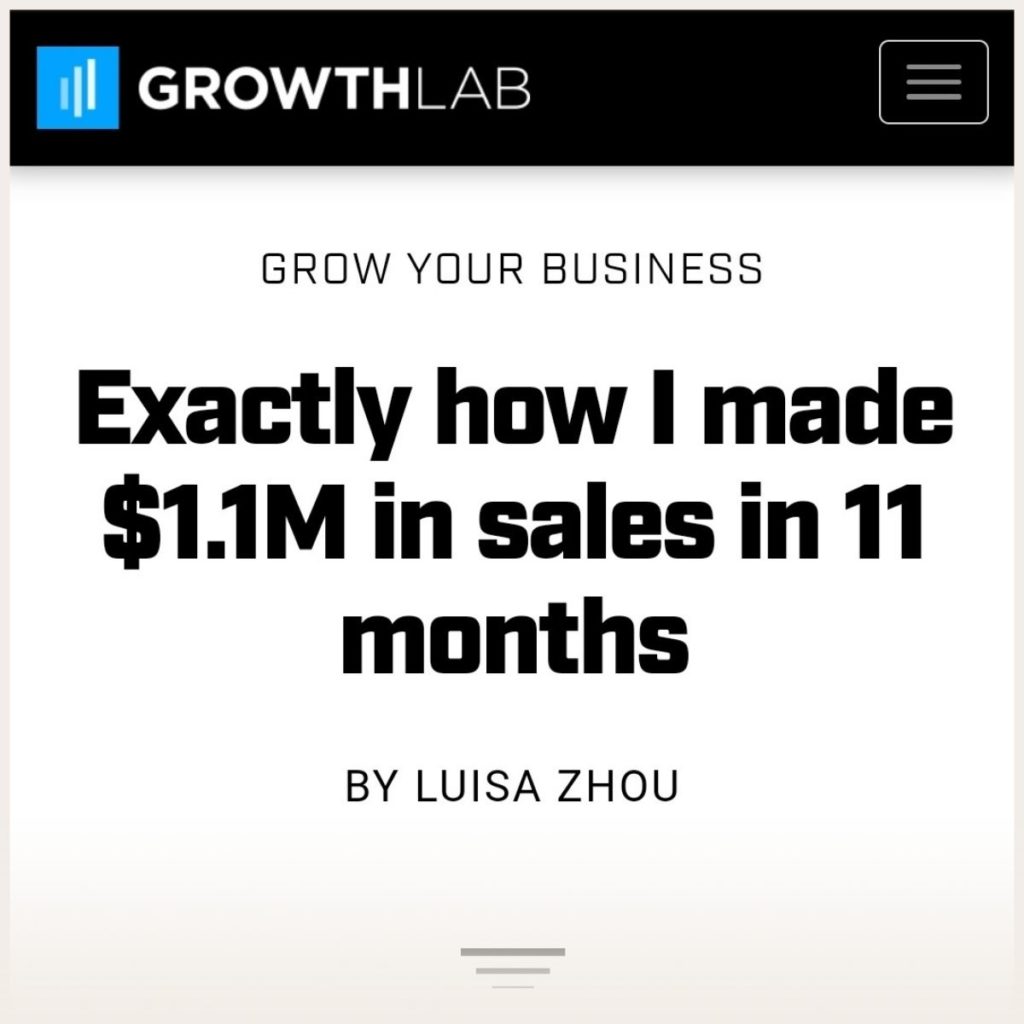
4. Call your audience
Wait… call your audience? Yes! You see, early on, you don’t have that much clout online. Once you’re more established (you’ve done podcast interviews, written guest posts, and so on), you don’t need to build that same type of trust.
But when you’re new, you do. One of the best ways is to talk one-on-one with your audience.
That’s what I did early on when I sold my group program. I’d get on the phone with each of the people who ended up buying from me.
5. Presell your course
Something you might hear often is:
You should sell your course when you’re completely done with creating it.
That’s not the best advice, though.
The thing is:
When you’re creating your course, you don’t know exactly what your students need. By pre-selling your course and then creating it based on their real-time feedback, you’re much better positioned to create a stand-out course.
Creating a course after selling it is actually one of the top mistakes I see new course creators make, which has them not making any sales.
That said, you do need to create something up front. Before you sell your course, create the first module so that your students can get started with it right away.
6. Create a lead magnet
A lead magnet is a “freebie” you give away on your website when someone signs up for your email list. Lead magnets are one of the best ways to grow your email audience, so to promote your course in the long run, you should create one for your website.
Your lead magnet teaches something tangible to your students and gives them an “aha.” For instance, if your course teaches people how to get a promotion, your lead magnet could help them calculate how much more they could earn.
7. Set up Joint Ventures
A joint venture or JV is a collaboration between yourself and a person in your niche who serves the same audience but doesn’t directly compete with them.
So for instance, if you sell a course on getting a promotion at work, you might collaborate with a stylist who helps people dress professionally.
Together, you promote each other to your respective audiences through your social media profiles, email lists, or by setting up a joint webinar.
8. Promote to your network
Another strategy to get the word out is to promote your course to your network.
You can directly reach out to people in your network who’ve asked for your advice before. Or you can post on social media to gauge their interest.
You might be thinking, “do I really need to sell to my friends and family? It feels so pushy.” But it’s not at all about being pushy. If someone in your network needs your product, then it will help them.
9. Publish Instagram stories
Instagram is a great place to reach new people and engage your audience. Especially Instagram stories, which can help you connect with potential buyers. Stories are more personal than normal Instagram posts and you can share a lot of “backstage” content about your course.
10. Post Instagram lives
When you’re a relatively new entrepreneur, livestreams can be an amazing “shortcut.” Because you can succeed without having to master copywriting (as with emails), sales (as with sales calls), webinars, or even marketing (beyond the basics).
To master livestreams, you only need one skill…
Being yourself.
Instagram livestreams, AKA lives, can be a highly effective way to reach your target audience for your online courses.
11. Create Instagram reels
Instagram reels are more creative content, where you typically recreate a trending reel format or come up with your own. For instance, you can answer questions about your course or course topic and edu-tain (educate + entertain) your audience.
12. Post Facebook livestreams
Like Instagram lives, Facebook livestreams help you quickly connect with your audience. Your livestreams can be anywhere between 10-20 minutes or longer.
Livestreams were a major reason why I was able to build my business so fast when I was completely new and had no audience at all. Even though I didn’t reach thousands of people with my livestreams early on, I was able to engage just a few people who became interested in what I had to say and bought from me.

13. Partner with a YouTube channel
Another great way to promote your course when you don’t have an audience is to partner with YouTube channels. Make a YouTube video or a series of videos and ask them to post it on their channel.
It’s a win-win: the channel owner gets fresh and interesting expert content, while you get to promote your course to their audience. Look for YouTube channels that aren’t direct competitors but serve the same audience as you.
14. Partner with a Facebook group admin
Similarly, you could partner with Facebook group admins. You see, Facebook groups in your niche can be a great place to talk about your course. Group admins are constantly looking for ways to engage their audience and that’s exactly what you offer them if you either create content for them or do a joint livestream or create video content.
15. Market on Quora
Quora is a platform where people go to find answers to their questions. And you can bet there are people asking questions about your course topic. If you want to use Quora to market your course, go to the platform and start answering questions with valuable and genuinely helpful answers.
Medium-level strategies
These strategies are a bit more advanced. Either they require you to learn new skills, you need to have an existing audience, or you need to put in a bit of time into growing an asset.
First up:
16. Grow a Facebook group
Facebook groups are a great way to build a community owned by YOU. By creating a group that gives a ton of value to your members, you’re creating an asset that helps you market your course over and over.
17. Grow a LinkedIn group
The same goes for LinkedIn groups. So, if your audience is on LinkedIn, you can set up a LinkedIn group and start promoting it to your audience.
18. Use testimonials
Once you have a few students and they have gotten results, you can ask them to give you testimonials. And those testimonials will help you sell your course to more people because they show that your program works.
For instance, here’s a testimonial for my ETE course:
19. Organize a challenge
Challenges were one of the key strategies I used for growing my own course business. I’ve taught this strategy to thousands of people who’ve been able to generate massive engagement, attention, and audience growth using my Challenge methodology.
To get results like this:
A challenge is a themed live event. My own challenges helped my audience start their business in just a few days. Every day, they completed steps and reported back on their progress.
These events built massive engagement for my course Employee to Entrepreneur, which helps people build their own online businesses.

20. Send emails to your email list
A question I get at least once a week is…
Do I really need an email list?
(Or some variation of it, like… “is email dead yet?”)
Yes, you do.
While people find your course by following you on social media, seeing your content in their feeds, and so on, your emails are what get them to take action and buy your course. (Not to mention that your email list is a communication channel that you own. AKA: That can’t be taken away from you, like your Instagram account could if Instagram decided to shut it down for some reason or other.)
That’s why you need an email list if you want to successfully sell your course.
21. Upsell your products
Another way to boost your sales is to offer upsells. Upsells are add-ons or upgrades that you offer when someone buys your course. Or you can offer your course as an upsell to a different product.
I used to offer coaching as an upsell to my course and that’s how I would add tens of thousands of dollars to my sales.
22. Offer seasonal promotions
You can boost your sales with seasonal promotions. For instance, I often do a Black Friday promotion where I bundle a few of my lower-priced trainings together as part of my LZ Friends & Family Sale.
23. Launch your course
Every year since I started this business, people have tried to tell me that launches are dead. And every year, my clients and I prove them wrong.
In fact, my live launches consistently drive close to a million dollars in sales. And I repeatedly see my clients make their first multiple five-figure launches.
Sure, the TACTICS that worked years ago don’t work now. Using those out-of-date tactics is like trying to drive a horse and buggy on the highway while racing with actual cars. (The online world moves fast.)
But launching if you know the STRATEGIES that work? So you know how to customize them into tactics that work NOW? Just as profitable as ever. Actually, more so because your competitors are too busy using old tactics and going out of business.
24. Offer bundles
A bundle is a collection of different courses that you offer for sale at one bundle price. The benefit of a bundle is that they have a higher perceived value when they’re offered as one package.
For instance, my LZ Friends & Family Sale that I tend to offer during Black Friday is a bundle of some of my courses.
25. Ask for referrals
Referrals are one of the most profitable course marketing strategies. 92% trust recommendations from people they know.
Because your course comes recommended to them, people are more likely to join it. AND you don’t have to spend any money to acquire new clients.
26. Find affiliates
Affiliates are another powerful marketing strategy. An affiliate is a person who markets your course to their audience in return for a commission. And as you don’t pay for new customers, affiliate marketing is a really profitable strategy.
27. Leverage PR
PR, or public relations, is a course marketing strategy that helps you get your course in front of new audiences, while being extremely profitable. With PR, you pitch media, such as different publications and podcasts, and when your pitch succeeds, you get featured by them.
PR is one of the reasons I was able to build my brand fast. I’ve been featured in or written for publications like Business Insider, Forbes, and Bloomberg.
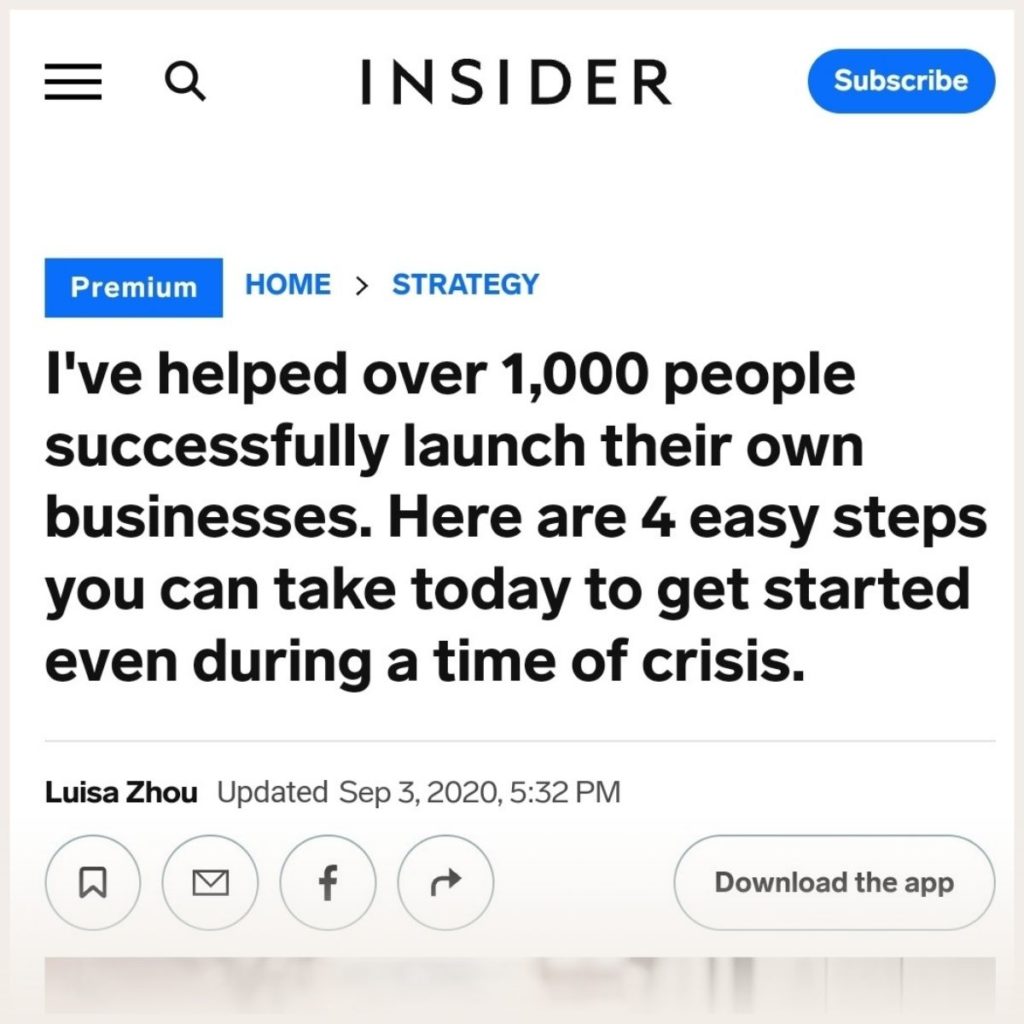
Next, let’s look at how to promote online courses on social media.
28. Market your course on Instagram
It’s thanks to social media, like Instagram, that I was able to use social media to quickly make my first six figures online.
Because of the relationship-building that social media allows you to do, you can get disproportionately large results.
Like selling 4- to 5-figure packages no matter how new you are.
And making 4- to 5-figures in sales no matter how small your audience.
I’m speaking from lots of first-hand experience. Not only for my clients, but for myself.
That said, I don’t believe in spending hours on social media. (Wasting half your day on social media “connecting” with people or posting twenty times a day.)
So I figured out how to leverage the way social media is designed to pull users in…and make it work for my business instead.
Even though I’m only on social media a few times a week (or less), and for just a few minutes each time at that, I’ve consistently used whatever platform I’m focusing on at the moment to drive an easy six-figures in sales per year.
Instagram especially is powerful for reaching and connecting with your customers, if your audience hangs out on this platform.
For instance, one in three Instagram users says that they are more interested in buying something after they’ve seen it in an Instagram story. 54% of people say they have made a purchase either in the moment or after having seen the product or service on Instagram.
So if your audience is on Instagram, consider it for your course marketing strategy.
29. Market your course on Facebook
I largely built my business with the help of Facebook. I’d publish Facebook posts, go live, and engage in Facebook groups…And it paid off. In my first year, my courses sold for six figures.
The key was that I focused on Facebook as my main strategy. I didn’t add on a ton of other social media platforms.
Focusing on one strategy at a time in this way allowed me to focus all my energy and resources on mastering that one thing.
And that’s how I was able to grow my courses so fast.
30. Market your course on Pinterest
Pinterest is a “visual discovery platform”, AKA a platform where people go to get inspired. And if your audience spends time on Pinterest, it might be the right platform for you.
A few years ago, I decided to add Pinterest to the social media platforms I use to market my courses. And today, the platform drives consistent sales. (But notice that I didn’t add it before I had already mastered other social media platforms. Focus is key.)
My student Emily, who is a career coach, also uses Pinterest to reach clients for her course.

31. Market your course on Twitter
If your audience hangs out on Twitter, you can use this social media platform to market your course. But rather than just posting about your course, talk to people, give them value, and build an engaged audience.
You can find people in your niche by searching for industry-specific keywords or hashtags.
32. Market your course on Reddit
Reddit is another platform where you can successfully market your course. For instance, my student Ruby, who is a relationship coach, made some of her first sales on Reddit.

On Reddit, you’ll choose a few subreddits or groups in your niche. Don’t just promote your course (such behavior will probably get you kicked out), but engage and provide value before you talk about your course.
33. Market your course on TikTok
Can you market your course on TikTok? You bet. If you love creating creative, short videos, TikTok can be a really powerful platform for you.
TikTok has over 1 billion monthly active users and TikTok users spend more time watching content than users on YouTube.
34. Market your course on Snapchat
Snapchat is another social media giant with 428 million users. If your audience is on the platform (the biggest share, 19.5% of users, are between 18-24), Snapchat can be a great way to build your course audience.
35. Market your course on YouTube
2 billion people use YouTube and they spend, on average, 16 minutes 22 seconds on the platform during each visit. It’s, in other words, a highly engaging platform.
While I focused on Facebook in my first years in business, I recently started focusing more on YouTube. If you like creating videos, it’s a fun platform for marketing your courses.
<video>
36. Market your course on LinkedIn
LinkedIn has a clear audience. If you want to create courses for professionals, this platform is for you. Just like with all the other social media platforms, a successful LinkedIn strategy requires that you create value before you sell.
Plenty of my students have been successful on LinkedIn, including Anna, who is a career coach for women.
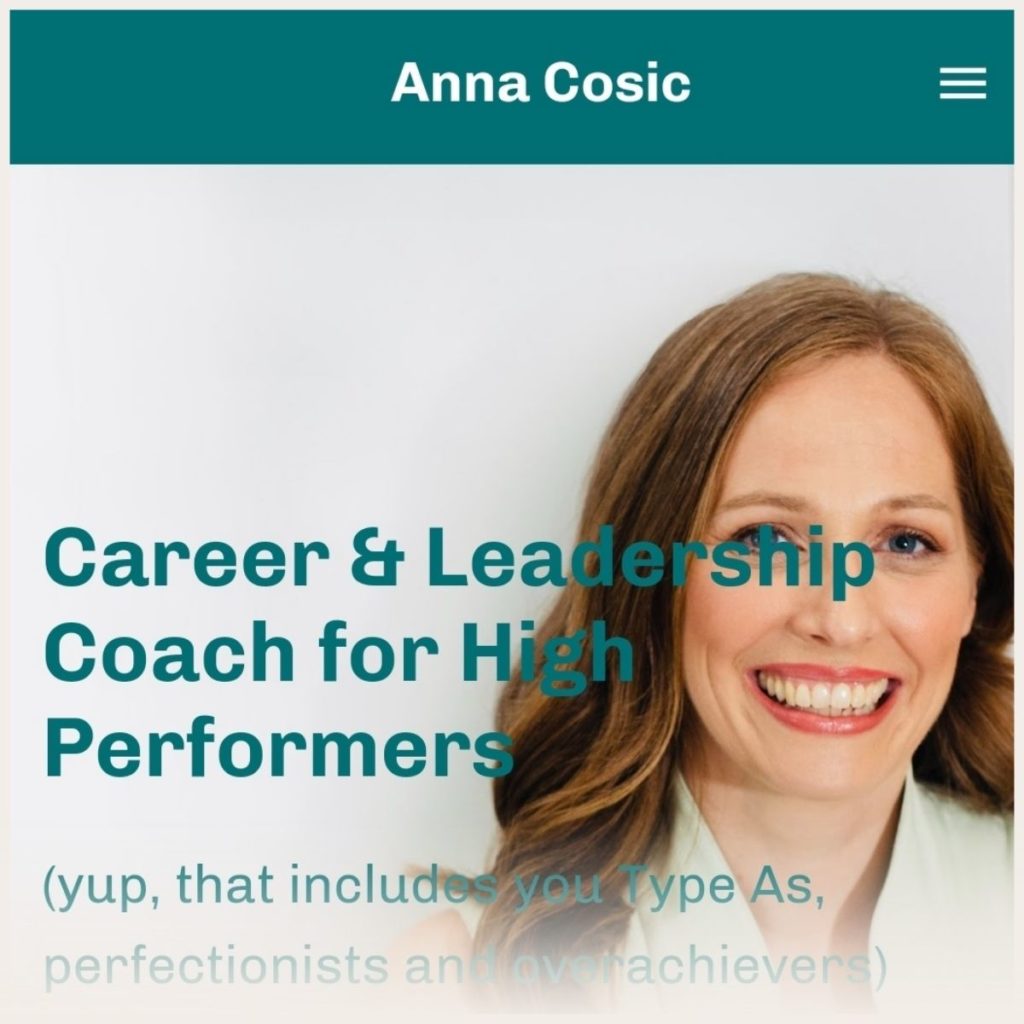
37. Market your course with WhatsApp or Slack
You can also use chat apps like WhatsApp or Slack to build your course business. Essentially, you’ll engage in chat groups and create your own group to grow an audience.
38. Use Facebook ads
Ever heard that ad costs are increasing…so maybe paid traffic is “dead”?
Paid traffic, including Facebook ads, still works well. My clients, in various industries, continue to enjoy profitable campaigns.
In order to learn how to advertise a course on Facebook, you do need the underlying strategies, though (grabbing people’s attention, finding your audience, and speaking to them) and not rely on random tactics and strategies.
39. Use Pinterest ads
As with Facebook ads, Pinterest ads work if your audience is on Pinterest. Unlike Facebook ads, Pinterest ads are still relatively new and ad costs are lower.
40. Use TikTok ads
TikTok is a new opportunity for advertisers, including you, if your course audience is on TikTok. 72% of users find ads on TikTok inspiring.
41. Use YouTube ads
You can also use YouTube ads. If you’re wondering which YouTube ads to choose, 29% of marketers say pre-roll (skippable) video ads are the most effective ads on YouTube.
42. Guest post on a newsletter
You can reach out to people with existing newsletters and “guest post” a newsletter for them. You probably will need to provide something in return, be it payment or reciprocation. If the latter, you need at least a small list.
43. Organize live events
Live events can be an effective way to build an audience and market your services. And fortunately, there are plenty of websites where you can market a live event, such as Meetup.com. Set up an event around your course topic and start engaging with people who are interested in learning about your niche!
44. Visit conferences
Conferences are another powerful in-person marketing strategy. By connecting with people at industry-specific conferences, you can quickly build up initial interest in your courses.
45. Create a webinar
Webinars are one of the best ways to quickly build a warm audience (AKA an audience more likely to buy your course because they trust you). Webinar marketing is a skill, though, so don’t start out with this strategy when you’re new to course creation.
46. Set up your website
Once you have a few course sales, you can create a simple website where people can learn more about you. But don’t focus on a website too early. You could just end up spending a lot of time building it when you could have spent that time on getting your first few course clients.
Here’s my guide on how to sell your course from your own website.
You can also use Teachable, an online course platform, to set up your course.
47. Promote to local organizations
Does your course benefit local organizations? In that case, reach out to them and offer your course. Those organizations could be non-profits, religious establishments, or associations.
48. Partner with companies
Or could your course benefit companies, either local small businesses or even big enterprises? Then, reach out and sell your course. If you sell to bigger corporations, you could even offer it in bulk to their employees.
49. Create a course sales page
Once you’ve sold a few courses, you can start planning for a bigger marketing funnel. And the first step is to create a course sales page, AKA a page people land on when they’re interested in buying your course.
50. Use Google ads
Google ads are another paid traffic source, so you pay for targeting a very specific group of people. In this case, you target people based on keywords.
51. Create a shorter course for a course marketplace
There are plenty of online course platforms with relatively low-priced courses. These include Skillshare and Udemy. Why not create a small course and promote it on those platforms? You could build an audience who have already gotten results from your first course and are ready for even bigger results!
52. Use influencer marketing
Think influencer marketing is just for physical products? Not so fast! You can get influencers to promote your products, either by paying for that exposure or by gifting them your course (it largely depends on their audience size).
Advanced strategies
This last group of marketing strategies is the most advanced group of strategies. Use these strategies when you have an established course business and are looking to scale.
53. Use search engine optimization
Search engine optimization or SEO is one of the most effective strategies to get more course clients. SEO essentially means that you optimize your website so that it ranks in Google. When people search for things related to your course, they find your website.
Because search engine users are already looking for information about your course topic, chances are they’ll be interested in learning more about your course.
54. Create an ebook
Ebooks are a very smart way to market your course. By creating an ebook about your course topic and selling it on a marketplace like Amazon, you can quickly get readers. Once those readers have read your book and understand your methodology and how it could help them, you can redirect them to your course.
55. Get on TV
Think TV is dead? Not so fast. TV is alive and well and by getting on different shows, you can promote your course to a broad audience.
56. Get on radio
Similarly, radio shows can help you promote your course. And the best part is that local radio stations don’t tend to be too competitive!
57. Set up an evergreen course sales funnel
With an evergreen course sales funnel, you sell your course on an ongoing basis. It’s a funnel that consists of email sequences, webinars, and sales pages. Setting up and testing an evergreen course sales funnel can take some time, though.
58. Get speaking engagements
Speaking at events is an effective way to grow your audience. If you enjoy speaking engagements, you could possibly build a business around that, while you’re selling your course.
Also, speaking opportunities tend to turn up the more established you get. Here I am at a Gary Vaynerchuk event in London:

59. Write a blog
A blog is a great way to grow your business…But you do need to know how to promote it! So wait with this strategy until you have the resources to spare to grow your blog exponentially.
60. Organize an online event
And finally, organizing an online event, such as an online summit, can help you sell your course fast. Choose a topic in your niche and invite expert speakers on that topic, and you’re good to go.
Over to you!
There you have it! Now you know how to market an online course.
Choose one or two strategies and focus on mastery before you move on to other strategies. That’s how much and thousands of students have grown their businesses.
That said, marketing is just one part of creating and selling an online course.
And there are 3 mistakes I see new course creators make.
Want to know what they are?
Get my FREE PDF with the 3 deadliest mistakes course creators make (and how you can avoid them).
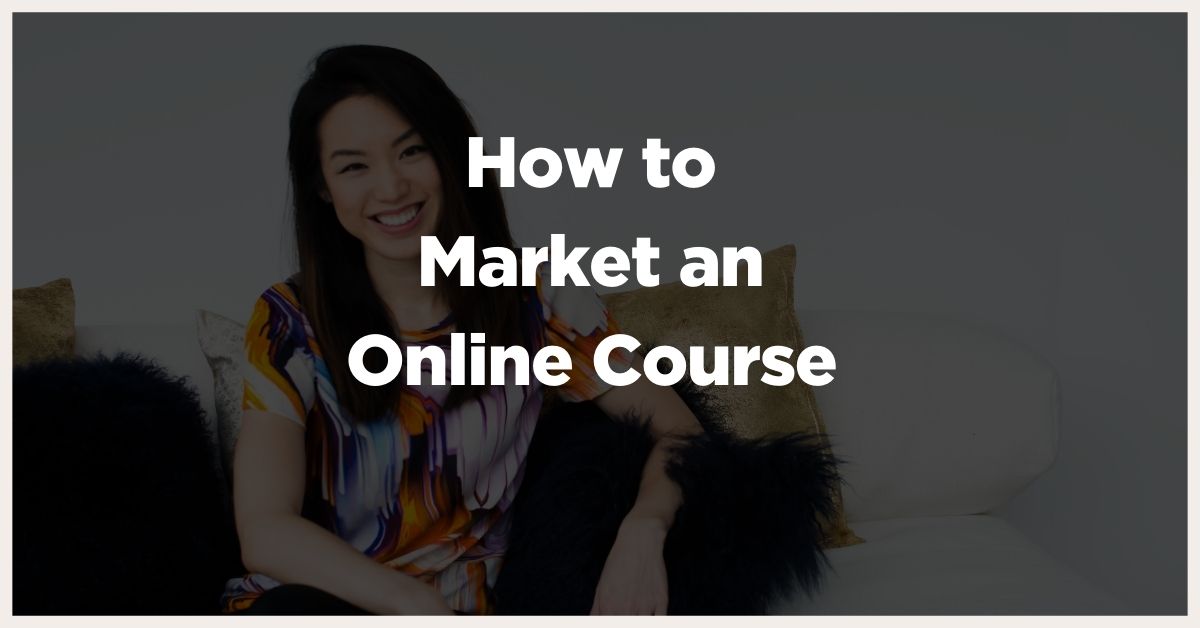




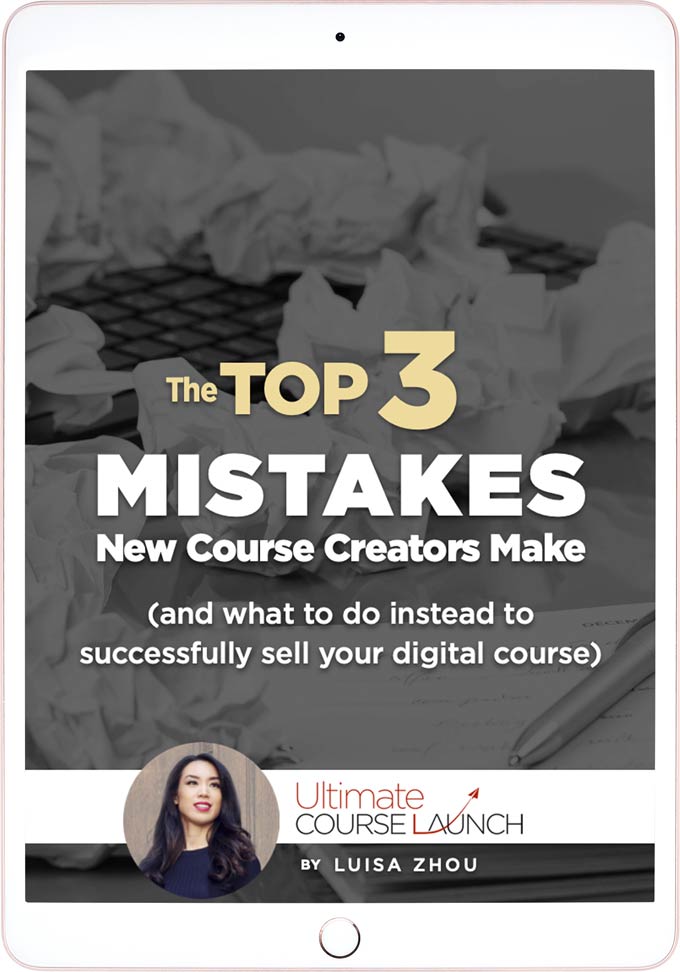



One Response
Great post Luisa. I was researching this same topic, and your insights are quite valuable. Thanks for the work you put into your article. Bravo!